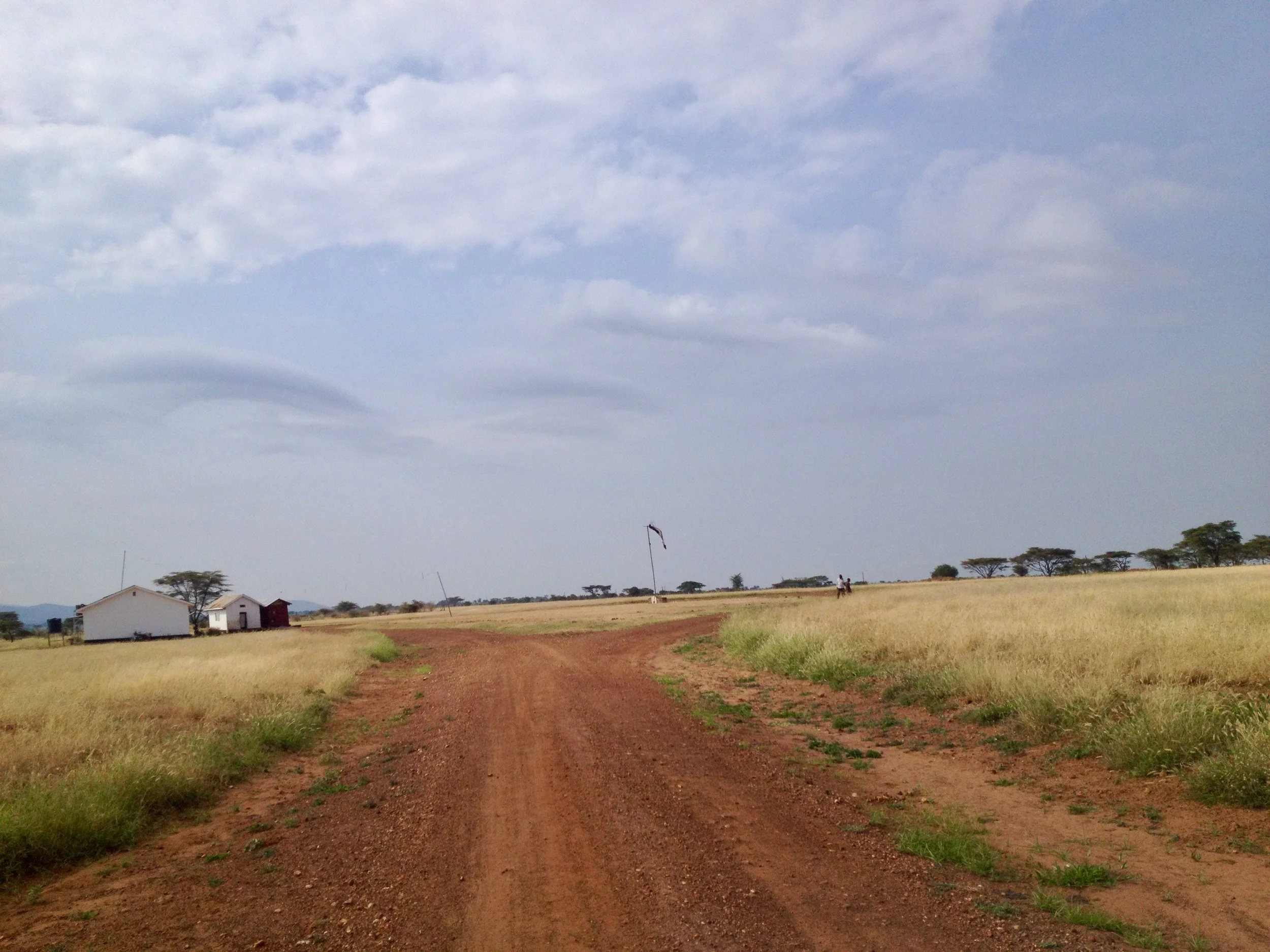In Transit
Entering a New Life
It was June 2016. I was one of only eight people, all White, to board the small 8-10 seater missionary airplane outside Kampala to head north. The American missionary pilot led us in prayers for safe travels before departing. This taxi of an airplane made multiple stops on the way to Moroto, a route devised based on the weight and number of people deplaning and/or boarding at each stop. My stop, Moroto, was the last stop before the plane would return to Kampala.
After takeoff, I watched outside the window as the sprawling city of Kampala and its buildings all faded into the distance. The farther north we traveled, the urban landscape faded into a tropical paradise. Below we could see luscious green trees, banana tree fields, tea plantations, and sparsely populated towns below. But as we continued north, the lush green landscape faded away. A large mountain welcomed us into Karamoja and we gradually entered an arid, dry, and almost treeless flat landscape that appeared to be begging for rain. Sporadically situated below were circular manyattas, a borrowed word from Maa and Kiswahili meaning ‘village’. These manyattas are all nature with stick fencing around the exterior and a maze of corridors within separating thatched roof huts around an open space in the middle for keeping animals. These circular villages made of mud and trees were the clearest sign yet that we had entered Karamoja, a land so vastly distinct from the rest of Uganda.
When we landed at our first stop in Kotido, the plane door opened to an oppressive heat. It was June and the rains were nowhere to be found. Children in hole ridden t-shirts and adults wearing ngatuks (traditional Karamojong wraps) knew the plane would come and waited anxiously to greet the White passengers inside. Children surrounded the plane and smiled for the cameras held by the missionaries behind me who almost compulsively snapped photos. I sat quietly, disturbed by the incessant picture snapping of children, but even more bothered that the children did not fear strangers. Through hand gestures and a few key words in English they asked for food, money, and water. Annoyed and accustomed to the children waiting for passengers, the pilot shooed them away so we could take off once again, traveling several stops before the final stop in Karamoja, my stop, Moroto.
Landing outside Moroto on the dusty landing strip, there were several pickup trucks awaiting our arrival. We were greeted by White missionaries or Black Ugandans employed as drivers for international organisations. Pickup trucks and SUVs were painted with signs denoting foreign aid groups working in the region. I most vividly remember signs for the WFP, UNICEF, German, and British foreign aid. But there was one person who stood out and one small beat-up truck without a slogan. I was greeted by the only woman waiting for the plane, and the only Black person not working for a foreign entity.
Sr Natalie was shorter and smaller than I expected. Wrapped in a custom-made African wax printed ankle length skirt and button-down jacket to match, she greeted me with a strong, loving hug as if she’d known me a lifetime. ‘Jackline! Welcome to Karamoja!’ She insisted on pulling my small suitcase back to her truck and climbed in. The paved road soon ended and the bumpy and dusty ride away from Mount Moroto and into my life in Karamoja began.

